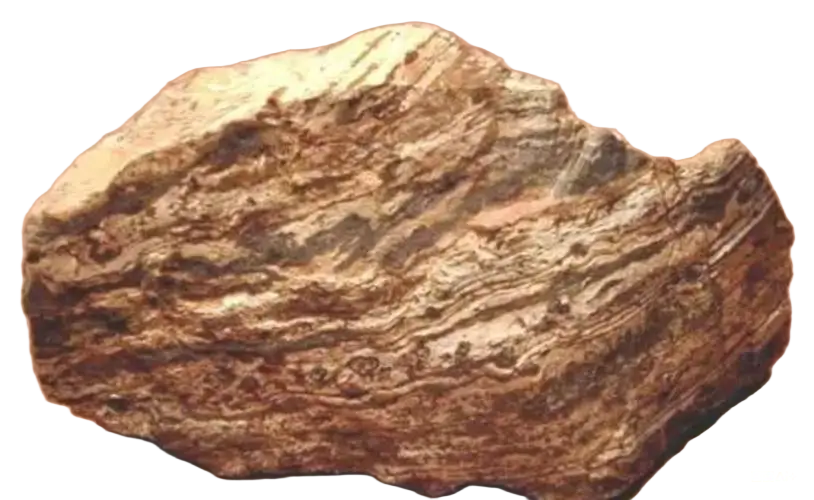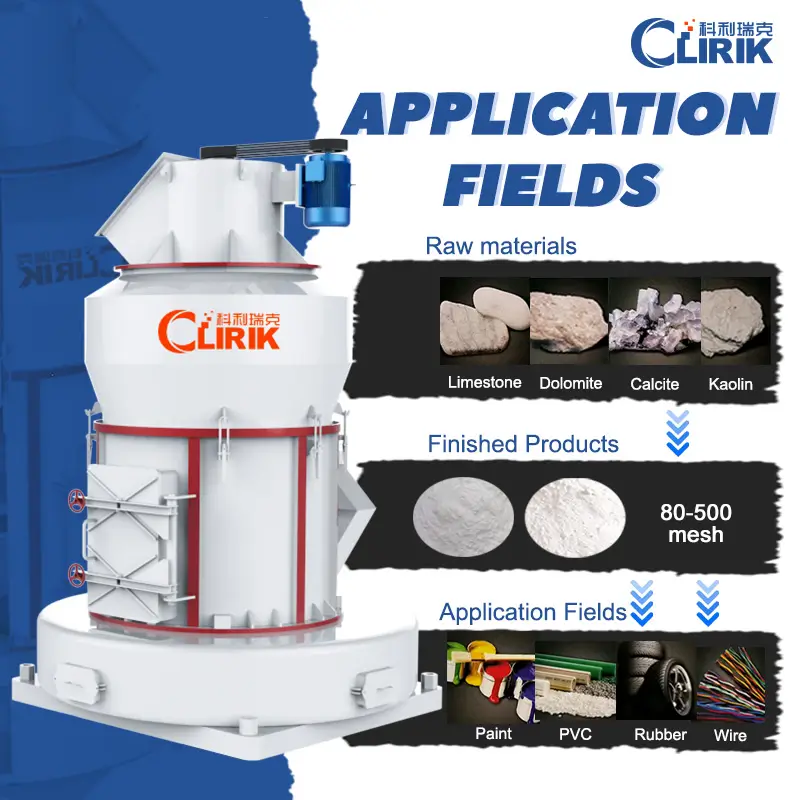For product information and pricing, Chat with sales agent:
or email us : sales@clirik.com
Click links below to see related products.

Rhyolite is a high-silica volcanic rock (quartz + sanidine matrix, Mohs 6–7, Bond Work Index 16–19 kWh t⁻¹) that becomes a saleable industrial mineral only after it is reliably reduced to 200-400 mesh powders.

The pendulum-type Raymond grinding mill remains the first-choice machine for this duty because it delivers the required fineness at the lowest CAPEX, smallest footprint and simplest operation of any dry grinding system.

Below is a concise but complete technical note that plant engineers can use to specify, operate and optimise a Raymond circuit dedicated to rhyolite.
Hard-but-not-brittle: Rhyolite’s glassy ground-mass resists impact fracture but yields to slow compression/shear—the exact stress mode created between a Raymond roll and ring.
Heat-sensitive: Natural glass begins to devitrify at >420 °C. Raymond’s short residence time (15–25 s) and copious air flow keep product temperature <90 °C.
Iron-contamination risk: Ceramic tiles or high-Cr rollers keep Fe pickup <70 ppm, still within the 100 ppm ceiling of premium ceramic bodies.
Throughput window: A single 4R-3216 unit treats 2.5–4 t h⁻¹ of rhyolite at 200 mesh—exactly the scale of most regional feldspar/quartz fillers plants.
Pre-crush: Jaw crusher 250 × 400 mm, closed side 25 mm, gives P₈₀ ≈ 20 mm, the sweet spot for Raymond feed.
Elevator & magnet: Bucket elevator + 1 500 Gs drum removes tramp steel before it reaches the grinding circle.
Raymond body: 4 rollers Ø320 mm, grinding ring Ø970 mm, 132 kW main motor, centrifugal force 15 kN per roller.
Classifier: In-built cage-type, VFD 30–150 rpm, cut point d₅₀ 80–600 mesh (180–23 µm).
Air loop: 55 kW blower, 12 000 m³ h⁻¹, negative pressure −4 500 Pa; pulse-jet collector 96 bags × 1 300 mm.
Product handling: Rotary valve → pneumatic line → 50 t steel silo with fluidisation pads.
Ceramic wall/floor tile body—200 mesh rhyolite replaces 8–12 % pegmatite, lowers water absorption 0.2 %, increases flexural strength 7 %.
Glass-ceramic frit—325 mesh fraction (<1 % on +45 µm) accelerates nucleation, shortens ceramming cycle 15 min.
Soil-conditioner—0.1–0.5 mm micro-granules made by agglomerating 200 mesh powder release 6 % K₂O over 90 days.
Mine back-fill—blend of 60 % tailings + 25 % rhyolite powder + 15 % cement achieves 3.8 MPa at 28 days, replacing 10 % clinker.
✔ Need 80–400 mesh, Fe <100 ppm, throughput <5 t h⁻¹? → 4R/5R Raymond perfect fit.
✔ Need D₅₀ <20 µm? Add a small stirred mill after Raymond; pre-grinding in Raymond still saves 25 % total energy.
✔ Feed moisture >4 %? Specify hot-air inlet or install dryer upstream.
✔ Future CO₂ tax? Raymond’s 11–12 kWh t⁻¹ is already the lowest of any industrial mill for this hardness—no further mitigation required.
For rhyolite, the Raymond grinding mill is not “old technology”—it is the optimum first-stage reduction tool.
A modern 4R-3216 with ceramic classifier vanes, high-Cr rollers and PLC air-flow control will deliver 3 + t h⁻¹ of true 200 mesh powder at <12 kWh t⁻¹ and Fe pickup under 60 ppm, day in, day out. Install it once, run it for 8 000 h between overhauls, and convert hard volcanic rock into steady, high-margin cash-flow.
